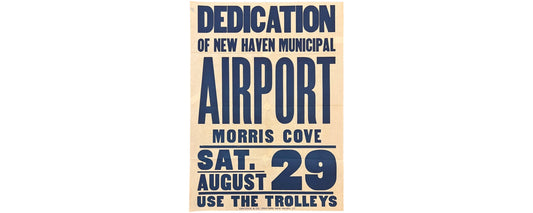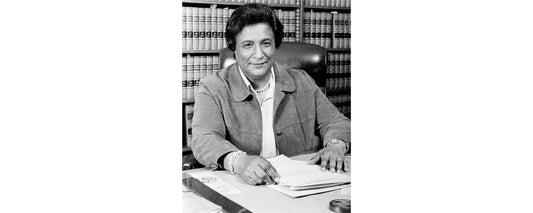Quinnipiac was the name first given to the land that, on September 1, 1640, became known instead by English settlers as New Haven. Like its earliest moniker, only traces remain of the artifacts and histories of the city’s first people, the Quinnipiac. One rare place to see the tools they left behind and learn about their life along the shoreline and the river that bears their name is the Quinnipiac Dawnland Collection housed at The Dudley Farm Museum in Guilford.
Gordon Running Fox Brainerd, who was believed to be a Quinnipiac descendant, made it his life’s work to gather evidence of his ancestors. Brainerd died earlier this year, but he left behind a significant collection of artifacts in the care of the Dudley Farm, where it has been displayed in the loft of a renovated barn for about 15 years. In the roomy second story of Dudley’s Munger Barn, several glass cases house hundreds of projectile points of varying sizes, shapes and materials. A small table draped with a deer skin displays additional tools made of stone, including local quartz. Many others are made of stone not found in this area, providing clues to a complex trade network that is believed to have reached as far as the Great Lakes region to the north and modern day Arkansas to the southwest, says Jim Powers, a retired Guilford history teacher who worked with Brainerd over the years to label and maintain the collection and joined him on several digs.
sponsored by
Most of the artifacts in the collection are between 3,000 and 9,000 years old, according to archaeologists who have examined them. But many are missing the type of data scholars would collect in an organized dig, such as specific location and depth, Powers says. In fact, many of the approximately 800 arrowheads and other tools in the collection were dug up by accident. Local farmers have turned up countless stone artifacts with their plows; some of their families passed their finds on to Brainerd.
In addition to these remnants of ancient human life in the area, the Dawnland Collection includes reproductions to give visitors a sense of how tools would have been used. Brainerd connected with the Lenni-Lenape of New Jersey, who passed along several pieces and created others, coupling some of his stone artifacts with wooden handles, leather fastenings and bone points. “Archaeologically, wood and bone in the ground don’t last very long,” Powers says. Brainerd also made tools himself. The Dawnland Collection also includes some items that reflect indigenous culture today, including wetu models, a mask, Quinnipiac artwork and sacred objects Brainerd used for blessings. Brainerd had ties to the Onondaga through his mother, Powers says, and the collection includes his Onondaga regalia. Members of the Schaghticoke tribe of northern Connecticut have also supported Brainerd’s efforts.
Unlike these tribes recognized by today’s governments, the Quinnipiac no longer have an identifiable community. That doesn’t mean they “disappeared,” however, as some historical accounts would have it. Instead, the survivors moved on, Powers says, merging with larger Iroquois tribes like the Oneida (a “sister tribe” to the Onondaga) and eventually migrating, in some cases, as far away as Wisconsin. Or they stayed and “blended in” with the rest of the population. “There are a lot of people out there probably who have Quinnipiac blood that really don’t know that they are Quinnipiac,” Powers says. The museum would like to connect with any known descendants.
The ancestors of Connecticut’s first people probably arrived to this continent from across the Bering Strait, perhaps as early as 17,000 BP (Before Present), though exact dates are “heatedly debated,” writes archeologist Lucianne Lavin in her seminal study Connecticut’s Indigenous Peoples: What Archaeology, History, and Oral Traditions Teach Us About Their Communities and Cultures (2013). Their history is studied in four periods: Paleo-Indian, Archaic, Woodland and Post-Contact, the last of which begins in 1633, when a smallpox epidemic originating with Europeans at a fort near what is now Hartford decimated the area’s native population, killing an estimated 80% within two years. By the time the English arrived five years later in what would become New Haven, war between the English and the Pequots of eastern Connecticut—a conflict in which the Quinnipiac had attempted to remain neutral—had further reduced the local population. According to John Menta’s 2003 study The Quinnipiac: Cultural Conflict in Southern New England, by 1638 the Quinnipiac population comprised just 400 to 500 people living in and around four villages stretching from present-day West Haven to North Haven to Clinton.
The initial deed agreed upon by the English and the local Quinnipiac village, under the leadership of Momauguin, provided military protection for the native people in exchange for remaining on the east side of New Haven’s harbor and allowing the English to settle on the west side. “That the Quinnipiac sachems perceived the terms of the treaty in the same light as the English did is doubtful,” Menta writes. “Though the colonists viewed the treaty as essentially a deed of purchase to the territory, the Indians interpreted it more as an agreement for joint occupation of the land.” At first, that’s what happened, Powers says. Then English farms began to sprawl into Quinnipiac territory. Powers lists a litany of the settlers’ offenses: “They cut the trees, they built fences, they plowed the earth, their livestock roamed freely and got into the Indian corn, the hogs dug up all the clams…”
By the turn of the 19th century, most of the surviving Quinnipiac in the area had migrated northward to join their extended families and other groups of “native refugees,” Powers says. The longest-lasting Quinnipiac settlement was located at West Lake in Guilford into the 1830s, after which its people, too, moved to merge with other groups.
What remains are the deeds, accounts of English settlers and small collections of artifacts in a few local historical societies, Powers says. Two museums tell the story of other indigenous peoples and Connecticut’s native population in general. The Institute for American Indian Studies Museum in Washington, Connecticut, is located on “the ancestral homelands of the Weantinock and Pootatuck people and their descendants who are now the Schaghticoke,” its website says. In Uncasville, the Mashantucket Pequot Museum and Research Center, sprawling across 308,000 square feet, tells the story of the federally recognized Mashantucket Pequot Tribal Nation. But so far, no museum exists to tell the particular story of the Quinnipiac.
Dudley Farm wants to change that. The nonprofit organization hopes to someday build a new structure to bring the collection up to museum standards and eventually offer interpretive programming that will tell the story of the Quinnipiac people, some 13,000 years after their arrival.
Quinnipiac Dawnland Collection
The Dudley Farm Museum – 2351 Durham Rd, Guilford (map)
Sat 9am-12:30pm through 10/30 and by appointment
(203) 457-0770 | info@dudleyfarm.com
www.dudleyfarm.com
Written and photographed by Kathy Leonard Czepiel. Image 1 features Jim Powers amid the collection. Images 2 and 3 feature arrowheads and a mortar and pestle, respectively.








